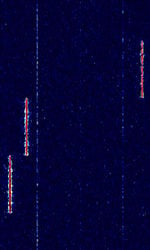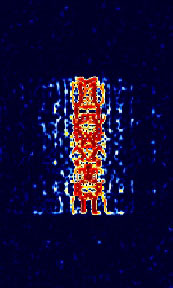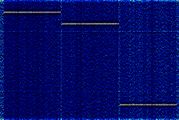SIGFOX
| IOTInternet of Things | |
|---|---|
| Wide-area: SIGFOX* (Europe) - NB-IOT (Worldwide) - LTE-M (Worldwide) Local: Zigbee* (Worldwide) - 802.11ah* HaLow (Worldwide) - LoRa* (Worldwide) *ISM |
 | |
|---|---|
| Frequencies | 868 MHz,868.6 MHz |
| Frequency Range | 868 MHz - 868.6 MHz |
| Mode | RAW |
| Modulation | BPSK |
| ACF | — |
| Emission Designator | — |
| Bandwidth | 200 kHz |
| Location | Worldwide |
| Short Description | SIGFOX is a IoT wireless network system utilizing ETSI's specification for Low Throughput Networks (LTN) and Ultra Narrow-Band (UNB) modulation. |
| I/Q Raw Recording | Download file |
| Audio Sample | |
SIGFOX is an IoTInternet of Things wireless network system utilizing ETSIEuropean Telecommunications Standards Institute. An independent, not-for-profit, standardization organization in the telecommunications industry in Europe, developing global telecommunications standards.'s specification for Low Throughput Networks (LTN) and Ultra Narrow-Band (UNB) modulation.
Characteristics[edit]
The signal on this page is specifically the uplink between the IoTInternet of Things device and the central network station. This uplink employs BPSKBinary Phase-Shift Keying (1 bit per symbol) modulation with ultra-narrowband technology and pseudo-random frequency hopping. Messages are very short. User has a maximum of 12 bytes of info available.
Each packet sent can have anywhere between 0-12 bytes of payload data, with a fixed frame of about 12 bytes that contains preamble, device id, and other metadata. In total, each packet sent has between 12-24 bytes, with some extra bits used for authentication parameters.
Each packet transmits in about 2 seconds, and each transmission from the IoTInternet of Things SIGFOX device to the main station consists of 3 of these packets transmitted on 3 pseudorandom frequencies, each transmission offset by about 45 msmilliseconds (.001 of a second). This is done as a redundancy measure.
SIGFOX currently has a tiered option plan for how many uplink transmissions you are allocated per day, as well as how many downlink transmissions you get from the main network station to your device (which is a different signal, using GFSKGaussian Frequency-Shift Keying at 600 BdBaud (unit symbol Bd) is the unit for symbol rate or modulation rate in symbols per second.).
- Platinum : 101 to 140 uplink messages + 4 downlink
- Gold : 51 to 100 uplink messages + 2 downlink
- Silver : 3 to 50 uplink messages + 1 downlink
- One : 1 to 2 uplink messages + no downlink
The early SIGFOX reference includes authentication and anti-replay protection, but not payload encryption.
Samples[edit]
| Single BPSKBinary Phase-Shift Keying (1 bit per symbol) Uplink |
|---|
Frequencies[edit]
| Region | Frequency | Regulation |
|---|---|---|
| Europe, Middle East | 868 MHzMegaHertz (MHz) 10^6 Hz | ETSIEuropean Telecommunications Standards Institute. An independent, not-for-profit, standardization organization in the telecommunications industry in Europe, developing global telecommunications standards. 300-220 |
| North America | 902 MHzMegaHertz (MHz) 10^6 Hz | FCC part 15 |
| South America, Australia, New Zealand | 920 MHzMegaHertz (MHz) 10^6 Hz | ANATEL 506, AS/NZS 4268 |
Decoding/Encoding Software[edit]
The reference implementation of a compatible Sigfox decoder & encoder "renard-phy" and protocol stack "librenard" that was created by Florian Euchner as well as reconstructed protocol specifications detailing the uplink and significant portions of the downlink protocol (downlink scrambling code is not included).
Video Examples[edit]
Additional Links[edit]
- Wikipedia SIGFOX
- 35C3 Hunting the Sigfox: Wireless IoT Network Security
- Link-Labs SIGFOX vs LoRA
- ETSI Low Throughput Networks (LTN) Protocols and Interfaces
- One Day at SIGFOX
- Monitoring LoraWAN RX2 869.525 MHz downlink channel
- Monitoring LoRaWAN
- Monitoring LoRaWAN


